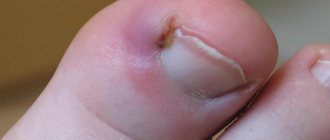Milk does not appear immediately after childbirth, usually after 36 hours. All this time, colostrum is released from the nipples, an extremely valuable product that transfers antibodies to the baby. Therefore, during the first day you need to apply it to your chest as often as possible. Today they are discharged from the hospital quite quickly. If there are no complications, then on the second or third day you will be allowed to go home. This means that a young mother may encounter such a phenomenon as lactostasis and, due to inexperience, not be able to help herself. Today we will talk about how to pump your breasts. This information can be very important for those who are preparing for the birth of a baby, especially if this is to happen for the first time.
First symptoms
If you notice warning signs and don’t know what to do, call the antenatal clinic. If it is night and the pain does not allow you to sleep, then you can call the consultant on duty in an ambulance. His recommendations will reassure you and give you important information on what to do next, how to pump your breasts.
However, we got ahead of ourselves a little. The symptoms can be intense and very unpleasant. This is soreness, sometimes lumpiness and redness, as well as fever and chills. A mother in this state really needs competent support and, above all, reassurance that feeding needs to be continued. You just need to know how to strain your breasts. Very often, noticing similar symptoms, women confuse mastitis and lactostasis, so let's differentiate between these two concepts.
What is the difference
Both of these pathologies are similar to each other. However, lactostasis is a non-infectious lesion of the mammary gland due to blockage of the milk duct. That is, the milk simply has nowhere to go, and compaction occurs. On the one hand, this is a natural protein of the body, but if it remains in the duct for an unnaturally long time, then rejection occurs. Increased body temperature is a consequence.
Now let's look further. If the mother does not know how to drain the breasts and does not take measures, then as a result of advanced lactostasis, uninfected mastitis develops within 3-4 days. The swollen tissue becomes inflamed. Another 2-3 days will pass, and bacteria will begin to multiply in this environment. Now the mastitis turns into an abscess.
Pumping. How to Express Breast Milk
When breastfeeding on demand, constant pumping is not necessary: the amount of milk is regulated by the baby himself. Frequent pumping “to the last drop” can lead to hyperactivation - excess milk production.
Does this mean that there is no need to pump at all, ever, for anyone? Not at all. There are times when pumping is truly necessary. Here they are:
- With a strong postpartum flow of milk, which is accompanied by engorgement (usually 3-4 days after birth). It is important not to overdo it and give the mother’s body time to figure out how much milk the baby actually needs. Pumping begins no earlier than a day after the start of the tide. The fact is that substances that signal that milk is being produced in excess appear in the breast only after a day. If you express milk earlier, it will come again in the same quantity. Your best breast pump during this period will be... the baby, whom you will attach to the breast at his request and on his own initiative, if the breast becomes hard between feedings.
And only in a situation where the baby does not want to suck, will you need to pump the breast until you feel relief.
- To increase lactation in cases where the child for some reason cannot empty the breast well enough. In this case, pumping plays the role of additional stimulation of the breast and increases the volume of milk produced.
- To maintain lactation if mother and baby are temporarily separated. By expressing at a rhythm of 2-3 times a day, you can maintain lactation for quite a long time. If you need to reach the child’s daily diet, you need to do this at least 6-10 times a day, including at night.
- If mom needs to go away and leave milk for the duration of her absence.
- In case of lactostasis - milk stagnation. With lactostasis, you need to pump if the child sucks the sore breast reluctantly or does not suck at all.
What is the best way to express - with a breast pump or by hand?
Each option has its supporters. If you are expressing milk for the first time in your life, first try doing it manually. You won’t hurt yourself with your own hands and you won’t injure your chest if you make mistakes in technique. In addition, by expressing with your hands, you can take into account the anatomy of your breast, select the necessary movements, speed and compression force.
When using mechanical devices, the risk of injury is much higher. The first three to four days after birth - during the colostrum period and the period of postpartum milk flow, as well as during milk stagnation (lactostasis), expressing with a breast pump is especially not recommended.
- it is ineffective
- you can only aggravate the swelling and worsen the outflow of milk.
But a breast pump can help you perfectly later, when your breasts are already developed. It makes sense to use it if regular pumping is necessary - for example, if the mother goes to work or is often away from the child.
Hand expression technique
Prepare a clean container with a lid; It is inconvenient to express into a baby bottle; it is better to take an ordinary wide cup or bowl. Wash and dry your hands so they don't slip on your chest.
- To improve milk flow before pumping, you can: apply dry heat to your breasts for a few minutes, drink something hot, warm your hands and feet in hot water, take a hot shower; roll the nipple between your thumb and index finger.
- Sit or stand comfortably and place the dishes under your chest.
- Place your thumb above the areola, and the index and middle finger below it: the fingertips and nipple are in the same vertical line. Make sure that while expressing your fingers are on the border of the areola and white skin or slightly beyond this border.
- Using your thumb and forefinger, press the areola towards your chest (that is, TOWARDS YOURSELF, not away from you). This may need to be done several times before the milk starts to drip, flow or splash.
- Now make the next movement - “bringing out”: slightly squeeze the fold with your fingers and bring it forward (this time away from you). This movement is a squeezing one.
- Move your fingers in a circle to empty all lobes of your breast. Make sure that your fingers do not slip on the skin - to do this,
you will sometimes have to wipe and chest - It is advisable to express the breast for at least 3-5 minutes, but no more than 20-30 minutes, changing hands until the milk flows weaker. It is impossible to express all the milk from the breast “dry”, since it is constantly produced.
What not to do when manually expressing : rubbing, pressing, massaging the breast, and also doing any movements that cause pain.
Expression technique with a breast pump
With a breast pump, on the one hand, everything is simpler: you just need to follow the instructions that come with it. On the other hand, it’s more complicated: not every breast pump can effectively express your breast. If you did everything according to the instructions, but still did not achieve success, the following tricks may help:
- comfortable posture, relaxed shoulders and neck;
- such a tilt of the body, in which the chest is facing down, will hang down;
- warm on the chest before pumping, hot drink;
- express both breasts at the same time (here you need a double breast pump);
- pumping directly while feeding the baby (we feed one, and express the other at the same time);
- thoughts about the child, imagine him feeding;
- “white noise”: sounds of nature, flowing water, sound of rain.
If you are unable to express milk
Have you not been successful or pumped less than you expected? When feeding on demand, the mother's body usually produces the amount of milk needed for one feeding. Accordingly, getting something extra may not be easy. But don’t lose hope: after the third or fourth attempt, pumping will become more effective. The breasts will “learn” to give milk in a new way, you will get used to making the necessary movements, study the rhythms of milk flow, and find the right mood. Pumping is a constant practice and experience.
Keep in mind that you can express the required portion of milk not at once, but over several pumping sessions - for example, during the day. Expressed milk should be stored in the refrigerator.
What does expressed breast milk look like?
Some mothers are scared by the sight of their own milk. It seems to them bluish, transparent, empty or, conversely, too fat. Breast milk is not like cow's milk! It can look like melted butter or like translucent bluish water. After standing for several minutes, expressed milk may separate - the fattier component will float to the top in the form of cream, and the more liquid component will remain at the bottom. It makes no sense to judge the nutritional value of milk by the type of milk. One woman’s milk may differ from another, “two-week” milk is not like “three-month” milk - but at any stage of lactation it will definitely meet the needs of a particular child.
Storing expressed milk
Expressed breast milk is stored:
- without refrigerator – 12 hours
- in the refrigerator - 24 hours
- in the freezer with quick freezing (temperature -18 degrees) – up to 4-6 months
As storage containers, you can use either special containers or clean glass containers that are hermetically sealed. Baby food jars, for example, are fine. You can simply use thick, hermetically sealed plastic bags.
To thaw breast milk, hold the container of milk under running warm water. Check the temperature by dropping warmed milk onto the back of your wrist. Do not defrost milk in a microwave oven.
And one last thing. Be sure to taste the milk before giving it to your baby. It shouldn't be bitter!
Author of the article - Anna Doroshevskaya, midwife, AKEV consultant
Article from the website “The ABCs of Motherhood”
When to pump
Until recently, doctors recommended doing this constantly. Feeding the baby had to be done strictly according to the clock, and after each feeding it was necessary to express every last drop of milk. Today, experts say that this should be done only in certain cases:
- When after colostrum a large amount of milk arrives at once, and the baby cannot latch onto the overfilled breast. But in this case, you need to know how to express your breasts correctly so as not to cause hyperlactation.
- After feeding, if you continue to have a feeling of heaviness.
- If necessary, leave a small “spare” at home if mom needs to go away.
- And, of course, if you feel symptoms of lactostasis (redness, heaviness, high temperature).
Preparation
If the expressed milk is intended to be fed to a baby, then everything must be sterile: hands, breasts and bottle. Otherwise, you can simply wash your hands. A warm shower and a compress in the form of a warm towel will make this process easier. If pumping is performed to relieve the symptoms of lactostasis, then you can take the No-shpy tablet, because the sensations are far from joyful. However, if you do not follow the procedure according to all the rules, the situation will only get worse, so you need to start.
Don't interrupt your baby's feeding
If a child is born weak and the mammary ducts are blocked, then he will not have enough strength to pump the breast. Therefore, the mother must help him and develop the glands herself. But you shouldn’t refuse feeding, despite the pain. Apply a warm compress, massage, and then place your baby back on your breast. After he falls asleep, you can continue the procedure until the condition improves.
Speaking about how to properly drain breasts during lactostasis, it should be noted that this procedure is at least unpleasant. Unfortunately, there are no pills or injections that will allow the lumps to dissolve. Therefore, start with a smooth and soft massage, preparing the breasts in a circular motion. The longer the better. And then start pumping, with constant massage from top to bottom towards the nipple. In this case, you should not put pressure on the nipple or areola, press hard or exert any other strong physical force. Otherwise, you may cause blockage of the ducts. When breasts are stagnant, you need to pump them very carefully. Usually this phenomenon does not last long. Just a few days after milk appears, you need to pay maximum attention to your breasts. Then the outflow of milk will improve, and there will be no problems in the future.
How to ensure good lactation?
- Experts recommend putting your baby to the breast immediately after birth. During this period of time, the neuroencortin system begins its active work. Thanks to it, the woman’s body receives a signal about the need to produce breast milk. After childbirth, colostrum begins to form, which is necessary for the normal functioning of the baby’s gastrointestinal tract. Attachment to the breast triggers a special set of mental impulses that help further improve the relationship between mother and child.
- Breastfeeding should be done at his first request. There is no need to limit the baby in the duration of the process. Scientists have found that the volume of milk produced by a woman depends on the needs of the child. Therefore, the more he sucks, the better the mammary glands begin to work. The volume of lactation in the body is regulated by prolactin, a hormone produced during active breastfeeding.
- Feeding should also be done at night, because it is during this period that prolactin is produced in greater quantities.
- The first days after birth, babies do not require additional fluid. They receive all the necessary components through breast milk. Therefore, you should not give your child extra water. This can be done in case of extreme heat and the baby’s urgent need for moisture.
- You should not immediately switch your child to formula. If there is no breast milk at the moment, you should consult a specialist. When the baby is born, the mother’s body begins to produce colostrum. Its volume per day is no more than 50 ml. Moreover, the composition has all the necessary properties so that the child can eat. For one feeding, 5 ml of colostrum is sufficient.
- The first feeding should be colostrum. It contains a large amount of antibodies. That is why every drop of this liquid is incredibly important for the child. The mother should put the baby to the breast at his first request, then the mechanisms in the body will be activated to normalize lactation.
- After giving birth, it is important to put your baby to the breast correctly. Make sure that your nipples do not become irritated or cracked. These defects will negatively affect the feeding process.
A woman can put her baby to her breast for the first time in the maternity hospital. While mommy is in the hospital, she must learn and develop a proper feeding regimen for herself.
When breastfeeding, it is important to take a comfortable position
Using a breast pump
Expressing your breasts after giving birth can be quite painful. If a woman experiences discomfort, she may stop performing the procedure. However, the consequences can be very dire, so if you have the opportunity to visit a hospital, it is better to trust the professionals, a mammologist or gynecologist. There is usually a breast pump in the treatment room, which works much more efficiently than manual expression. A woman does not need to think about how to pump her breasts after childbirth; just press the silicone pump tightly to her breast. Due to the overcrowding of the glands, the sensations will be painful, but the next time everything will go much faster and easier.
How to properly put your baby to the breast?
In order for breast milk to appear, it is important to carefully consider this aspect when feeding. The speed at which the child learns to properly absorb food will depend on this. It is important for a woman to protect her nipple from injury. The mammary gland should be emptied regularly - the process serves to prevent the occurrence of congestion and mastitis. The baby may refuse such meals. In this case, the woman is recommended to seek advice from a nurse or neonatologist. They will show the new mother how to properly wean her baby to the breast.
Breastfeeding should be started as early as possible. In this case, it will be possible to avoid a number of problems that may arise with the health of the mother and child. Most often, cracks appear due to improper grip of the nipples. The situation can lead to their inflammation and disruption of milk supply.
A woman should know: there should be no pain when sucking the breast. This situation indicates improper nipple latching.
Milk is sucked well if the baby manages to capture the areola area. At the same time, his lips should be turned out, his mouth should be open wide. Make sure that your nose and chin touch your chest during the process. In this case, all the baby’s movements will be effective, and he will be able to eat quickly.
Milk actively flows to a woman’s breast if she sits in a comfortable position. In this case, the baby can latch onto the nipple and eat well.
Unfortunately, postural problems can occur in mothers after a cesarean section or episiotomy. After such procedures, it is recommended to feed the baby lying on one side.
How long will it take you
It will not be possible to clear the stagnation of milk in the breast at one time, but high-quality emptying can greatly facilitate further care. Now apply the baby to the sore breast as often as possible. Once he is satisfied, continue with gentle massage and pumping. When lactostasis occurs, some people manage to get rid of stagnation in one day, for others it takes at least three. But in any case, if four days have passed and you still have painful lumps, then you will no longer be able to solve the problem on your own, consult a doctor, and if you have a high temperature, call an ambulance. The only way to help yourself is to massage yourself repeatedly.
When and why do you need to strain the thoracic ducts?
Lactostasis
In medicine, a phenomenon accompanied by stagnation of breast milk is called lactostasis. During the postpartum period, this is a very common pathological phenomenon that causes inconvenience to the woman and child.
Lactostasis has a pronounced clinical picture. The first symptoms of milk stagnation in the mammary glands:
- When expressing, uneven flow of milk is noted. For example, from some ducts milk flows unhindered, while from others it is released only drop by drop or does not drip at all.
- Hardened glandular tissue. The breasts usually swell and feel like stone. On palpation, lump-like lumps may be felt.
If the skin in the chest area is red, you should consult a doctor. - Painful sensations and a feeling of discomfort. Even minor touches to the breasts can cause severe attacks of pain in a woman.
- Feeling bursting from the inside.
If you do not immediately contact a medical facility, the clinical picture will become more vivid:
- inability to touch the breast due to severe pain;
- increased body temperature;
- redness of the skin in the chest area.
Most often, congestion occurs in the first month after the birth of a child. The danger of the pathological condition is accompanied by the development of lactostasis into mastopathy - an inflammatory process that affects soft tissues. Treatment will require taking antibacterial drugs, and in some cases surgery is inevitable.
Breast pump
To prevent stagnation of milk in the breast, you need to become familiar with the main provoking factors.
- Neglecting pumping. Until the lactation period improves, you will need to first pump before feeding the newborn.
- Irregularity of putting the baby to the breast.
- A child with a weak sucking reflex. Most babies are born weakened, as a result of which their oral cavity is not developed and they are unable to completely empty the mammary glands.
- Replacing colostrum with milk. As a rule, this process occurs no earlier than 2-5 days after birth. It is accompanied by a sharp and strong flow of milk, but it is worth understanding that its quantity does not always correspond to the baby’s needs.
The most common problem that provokes the development of many pathological conditions is improper attachment of a newborn to the breast. Most often, this is faced by young women who have become mothers for the first time and are still inexperienced in these matters.
Nowhere without technology
The massage technique will be very useful for those who want to know how to pump breasts during lactostasis. First, the mammary glands are stroked clockwise with the palm, then light slapping is performed. Now the most important thing is to forcefully move your knuckles along the chest from the base to the areola along the entire circumference, paying special attention to the blockage area. Such manipulations are mandatory before each feeding and pumping. It is important to perform them between feeding the baby to the breast. This is when the procedure will be effective and the pain will go away quickly.
During feeding, it is also very useful to massage the compacted part with your knuckles. The child cannot always help the mother empty the breast, especially if there is a blockage of the ducts. Prolonged sucking is tiring for him, and as a result he can only get a small amount of milk.
What to do if your milk ducts are blocked
Improvement should occur on the second day. If the situation has not changed, or even the opposite, then you should immediately seek help from a doctor. Failure to take the necessary actions on time can provoke infected mastitis, the danger of which is the need for surgery and disruption of the entire breastfeeding process.
The causes of the development of infected mastitis are also cracks and erosion of the nipples, a violation of the protective top layer of nipple skin. Cracks appear as a result of improper hygienic care of the breast and ignorance of the rules by which a child is applied to the breast .
Do not wash your breasts with soap and water before each feeding , as this will dry out the protective layer of the nipple and cause cracks.
After completing feeding and all hygiene procedures, the breasts need to be ventilated for several minutes in order to remove excess moisture naturally. If this is neglected, then the breasts may become soggy, cracks may appear, and even the development of thrush and the appearance of infected mastitis.
The rapid healing of cracks is facilitated by Bepanten cream, calendula ointment, and Panthenol ointment, which activate the restoration of damaged tissues. Infected mastitis can also appear as a result of a complication after a particular disease - for example, tonsillitis . Complications can appear at the beginning of the disease or after a few weeks.
Infected mastitis must be treated promptly with antibiotics. At the same time, you cannot stop the process of pumping and breastfeeding, as treatment with medications may be ineffective. In this case, special antibiotics are used, which can be combined with breastfeeding. So there is no reason to fear for the baby’s health.
If the treatment is carried out effectively, then the pumping process should be stopped on the tenth day. Infection of the healthy lobe of the breast can be prevented by performing procedures using an electric breast pump. If you do this procedure with your hands, then pain is possible. The breast pump will ensure the lactation process at the same level, and in the future it will be possible to feed the baby from both breasts.
If you delay in contacting a doctor, you can wait until an abscess occurs, since a purulent sac may form in the sore breast. Even such mastitis should not be a reason to stop breastfeeding. The baby is fed on one breast, reducing the time intervals between feeding processes.
Removal of the purulent sac is carried out using drainage and antibiotics. It is strictly forbidden to self-medicate any type of mastitis. To get rid of this problem, you should definitely seek help from a mammologist or obstetrician. Lactostasis can be cured at home, on your own.
The main condition in the fight against lactostasis is carrying out procedures aimed at preventing its occurrence. Attention should be paid to the choice of underwear , rest, frequent latching of the baby to the breast, the correct choice of position - both during feeding and sleep - and breast hygiene. It is worth refraining from lifting weights; injury and hypothermia of the chest should not be allowed.
At first glance, it may seem that the process of preventing lactostasis is complex and time-consuming, but by doing these procedures every day, you can get used to them. We hope that these tips will be useful to young mothers and will help make the feeding process a real pleasure.
Additional tricks
- Before each feeding or pumping, you need to immerse your breasts in a bowl of warm water, this makes the procedure much easier.
- Watch your diet; it is very important to eat fatty fish and vegetable oils.
- Nature itself comes to the aid of mothers. Apply a cabbage leaf to the sore spot for 15-20 minutes. It needs to be beaten until the juice appears.
- But at night it is very useful to make a warm compress. To do this, the breasts need to be smeared with warm camphor oil and wrapped in something warm.
The most important thing is to prevent lactostasis from turning into mastitis. Therefore, if you feel that you cannot cope on your own, then be sure to consult a doctor.
Prevention
It is easier to prevent any disease than to treat it later. Therefore, take precautions so that you don’t have to suffer later when straining lumps. It is very important to change your sleeping position and wear a suitable bra so that nothing is squeezing anywhere. From the day you give birth, you should start doing exercises to ensure good milk circulation. These are simple swings of your arms in a circle back and forth. If the intervals between feedings increase, then it is very important to express your breasts at least halfway. Lastly, change your position every time you feed. You can feed sitting or lying down, hanging over the baby. A maternity pillow can be helpful for this, as it allows you to choose a range of comfortable feeding positions.











